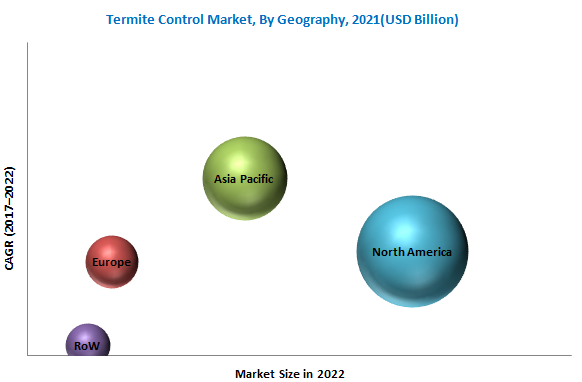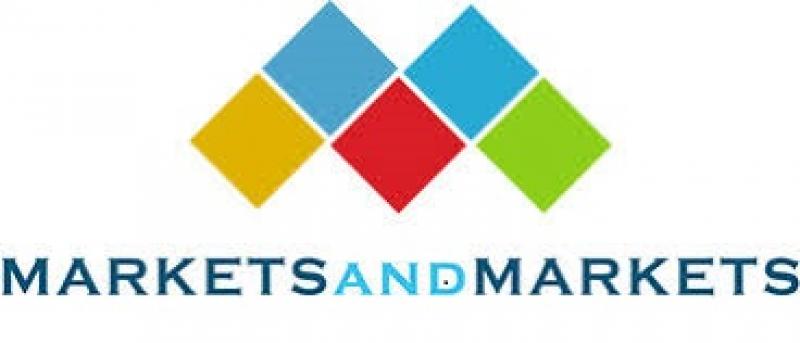Termite Control Market Projected to Reach $4.11 Billion by 2022, at a CAGR of 5.6%
The report "Termite Control Market by Species Type (Subterranean, Dry Wood, Dampwood), Control Method (Chemical, Physical & Mechanical, Biological), Application (Commercial & Industrial, Residential, Agriculture & Livestock Farms), and Region - Global Forecast to 2022", The termite control market was valued at USD 2.96 Billion in 2016. It is projected to grow at a CAGR of 5.6% from 2017, to reach USD 4.11 Billion by 2022.
The years considered for the study are as follows:
Base year – 2016
Estimated year – 2017
Projected year – 2022
Forecast period – 2017 to 2022

The objectives of the report:
To define, segment, and measure the termite control market with respect to its species, application, control method, and key region.
To provide detailed information regarding the crucial factors influencing the growth of the market (drivers, restraints, opportunities, industry-specific and challenges).
To strategically profile the key players and comprehensively analyze the competitive landscape for the market leaders.
Analyzing the demand-side factors based on the impact of macro and microeconomic factors on the market and shifts in the demand patterns across different subsegments and regions.
Download PDF Brochure: https://www.marketsandmarkets.com/pdfdownloadNew.asp?id=90550477
The climatic conditions in North America and Asia-Pacific are suitable for the breeding of termites; the market growth in such regions is expected to be primarily driven by urbanization, public hygiene measures, and supportive government initiatives. Hence, termite control will be viewed as a business opportunity in the next five years. As a result, many multinational players have entered into the production of various control methods of termites.
Chemical control segment dominated the market in 2016
Chemical methods are highly used to control termites. Chemical termiticides are synthetic substances used to kill termites, either by contact or by systemic action. Chemicals used in the termiticides are mixed with water, and are hence easily applicable on the affected area. The ease in application has made this control method more convenient to use by termite control solution providers. The chemical control methods accounted largest market share in 2016. Due to stringent regulations pertaining to the usage of chemical compounds, the European market is projected to witness a slow growth. Chemical control methods include chemicals of various classes such as organophosphates, synthetic pyrethroids, phenylpyrazole, chlorinated hydrocarbons, chloronicotinyls, and others such as trifluoromethyl aminohydrazones, borates, pyrroles, and fluoroaliphatics.
Residential segment is projected to be the fasting-growing application from 2017 to 2022
The application of termite control in the residential segment is projected to grow at the highest CAGR from 2017 to 2022. The increase in population density, climate change, and growth in awareness among public households for termite control are the driving factors in developed markets such as North America and Asia-Pacific.
Speak to Analyst: https://www.marketsandmarkets.com/speaktoanalystNew.asp?id=90550477
North America accounted for the largest share in the termite control market in 2016
North America accounted for the largest market share in 2016, due to significant demand for termite control services in commercial establishments (such as manufacturing units, hotels, and restaurants) and industries (such as food processing and pharmaceutical sectors) in the region. The housing market in North America has been witnessing growth. Further, the growth in awareness and rise in concerns about the damages caused by termites have resulted in increased demand for termite control services in this region, as most of the constructions are generally based on wood.
